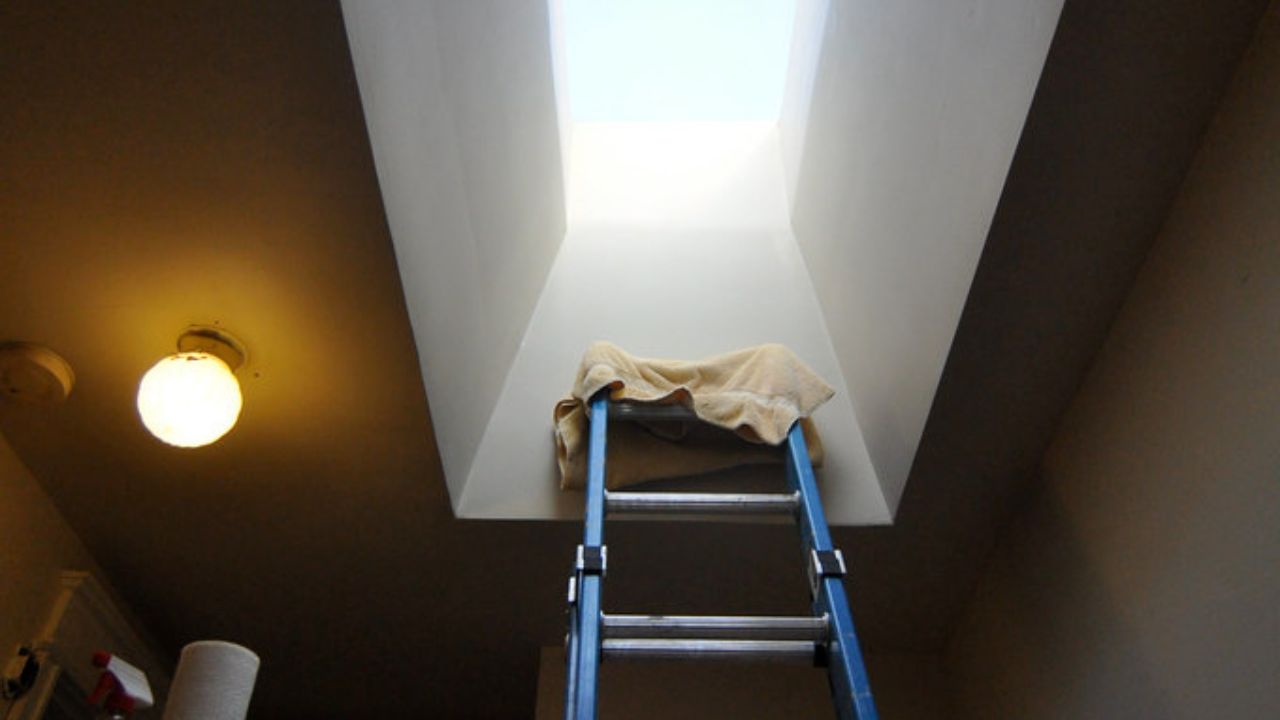
You may not realize that while skylights can bring in beautiful natural light and add a touch of elegance to your space, there are potential downsides to ponder. Before you decide whether a skylight is a good idea for your home, carefully weigh the pros and cons. From issues like leaks to maintenance challenges, there are factors to mull over that could impact your decision. But fear not, as there are ways to mitigate these drawbacks and make skylights work effectively.
Listen to the Summary
Pros of Installing Skylights
When considering the benefits of installing skylights, evaluating how they can improve natural lighting and energy efficiency in a home is crucial. Skylights are strategic architectural elements that allow natural light to penetrate spaces that might otherwise rely on artificial lighting sources during the day. By harnessing natural light, skylights can help reduce the need for electrical lighting, leading to potential energy savings. Additionally, introducing natural light into a home through skylights can create a more visually appealing and inviting atmosphere.
Beyond the aesthetic advantages, skylights also have the potential to improve the overall well-being of occupants by providing exposure to natural light, which has been linked to enhanced mood and productivity. Properly positioned skylights can also contribute to passive heating in the winter, reducing the reliance on heating systems. Overall, the installation of skylights can offer a cost-effective and sustainable solution to improving natural lighting and energy efficiency in residential spaces.
Cons of Having Skylights
Given the drawbacks of having skylights, addressing potential issues that may arise with their installation and maintenance is essential. One of the main cons of having skylights is the potential for leaks. Improper installation or aging seals can lead to water infiltration during heavy rain or snow, causing damage to your ceiling and walls. Additionally, skylights can be a source of heat loss in the winter and heat gain in the summer, impacting energy efficiency. Glare and UV exposure are other disadvantages, as excessive sunlight can create discomfort and damage your furniture and flooring over time.
Furthermore, skylights require regular maintenance to make sure they function correctly. Cleaning them can be challenging, especially for skylights located on high ceilings. Debris accumulation, such as leaves or branches, can obstruct the skylight and prevent proper drainage, leading to potential water pooling. It’s essential to consider these cons before deciding to install skylights in your home.
Maintenance and Potential Issues
To guarantee your skylights’ longevity and peak performance, diligent maintenance and vigilance against potential issues are paramount. Here are three key aspects to keep in mind:

- Regular Cleaning: Keep your skylights free of debris, such as leaves, branches, and dirt, which can obstruct sunlight and drainage. Use a soft brush or cloth to clean the glass and frame, and ensure the weep holes are clear to prevent water buildup.
- Inspection: Periodically examine the seals, flashing, and surrounding roof area for any signs of damage or wear. Look for water stains, mold, or cracks that could indicate leaks. Addressing these issues promptly can prevent costly repairs in the future.
- Sealant Maintenance: Check the sealant around your skylight for cracks or gaps that may compromise its waterproofing ability. Reapply sealant as needed to maintain a tight seal and prevent water infiltration. Proper sealant maintenance can significantly extend the lifespan of your skylights and protect your home from water damage.
Tips for Making Skylights Work
To optimize the functionality of your skylights, implementing strategic positioning and proper shading techniques is critical in harnessing natural light effectively. Skylights on the south-facing roof will receive the most sunlight throughout the day, maximizing the light entering your space. However, direct sunlight can also lead to increased heat gain, so pairing your skylight with shading options like blinds or shades to control the amount of light and heat entering your room is essential.
Choosing energy-efficient glazing for your skylights can also help regulate heat transfer and reduce UV exposure. Low-emissivity coatings and insulated glazing units can improve the overall performance of your skylights, making them more energy-efficient and environmentally friendly.
Regular maintenance, including cleaning the skylight and checking for leaks or damage, is vital to maintain practical functionality. Keep an eye on the seals and flashing around your skylight to prevent water infiltration and maintain a watertight seal. By following these tips, you can make your skylights work effectively and enjoy the benefits of natural light in your space.
Frequently Asked Questions
Can Skylights Increase the Risk of Leaks in My Home?
If improperly installed or maintained, Skylights can increase the risk of leaks in your home. Regular inspections, proper flashing, and professional installation can help mitigate this risk and guarantee a watertight seal.
Do Skylights Affect the Energy Efficiency of My House?
Having skylights can impact energy efficiency by increasing natural light and heat gain. Consider factors like orientation, glazing, and shading to optimize energy savings. Proper installation and maintenance are essential for efficiency.
Are There Privacy Concerns With Having Skylights?
When considering skylights, privacy concerns arise due to potential visibility from above and outside. To mitigate this, strategic placement and using blinds or tinted glass can offer privacy without sacrificing natural light.
How Do Skylights Impact the Resale Value of a Home?
When thinking about how skylights impact resale value, remember that they can elevate your home’s overall appeal and value by bringing in natural light, creating a sense of spaciousness, and adding a modern touch.
Can Skylights Cause Fading of Furniture and Flooring?
When installing skylights, remember that sunlight exposure can cause fading of furniture and flooring over time. Use UV-protective window films or coverings to mitigate this effect and preserve your interior decor.